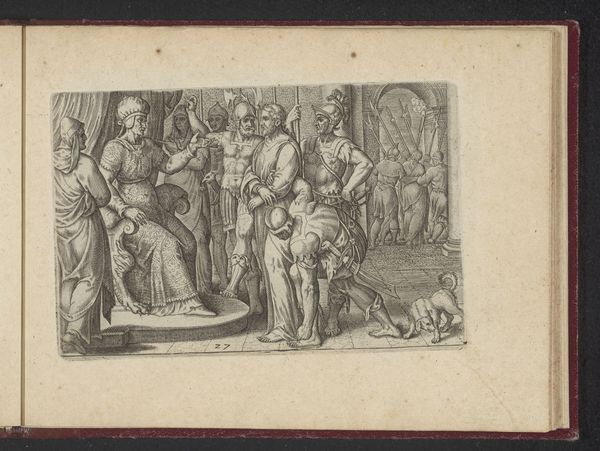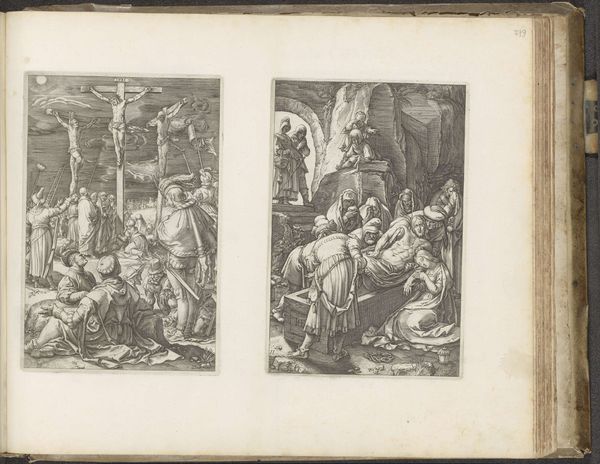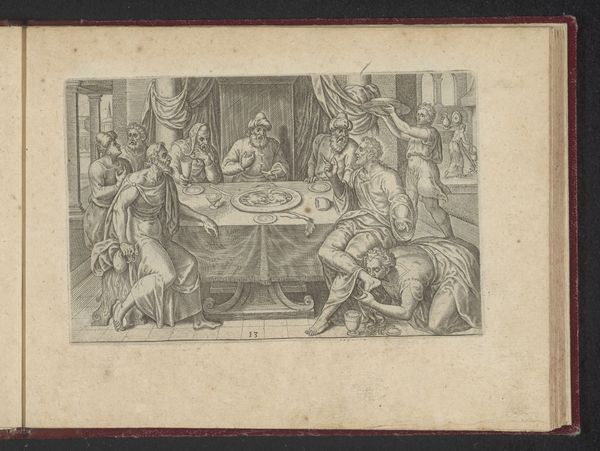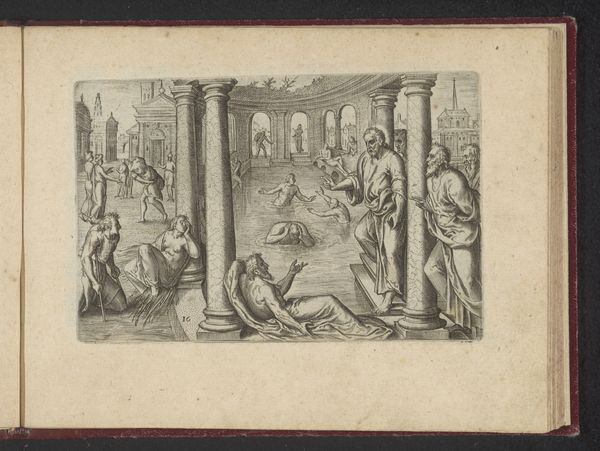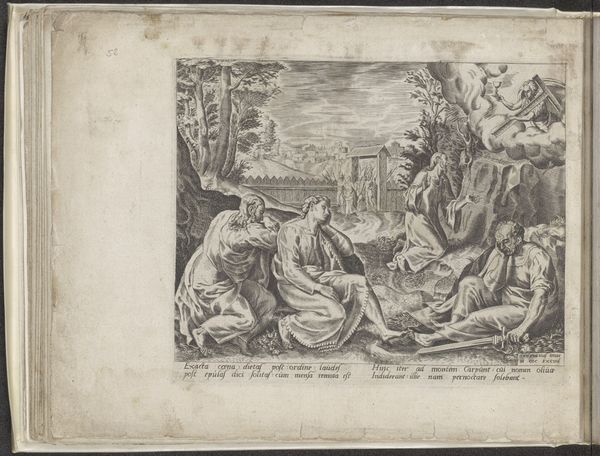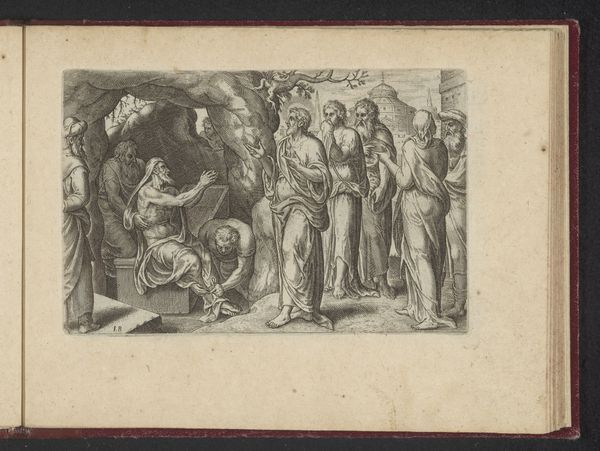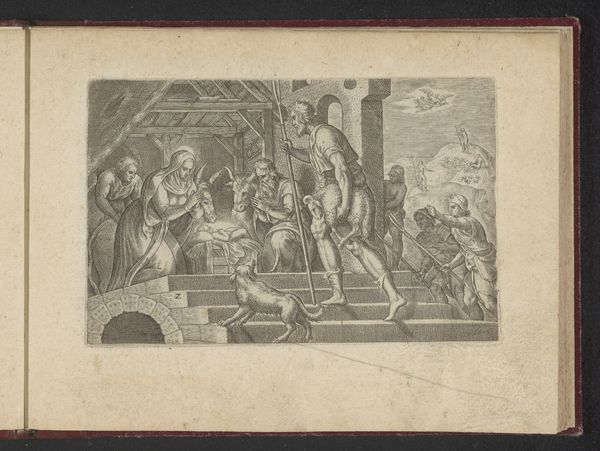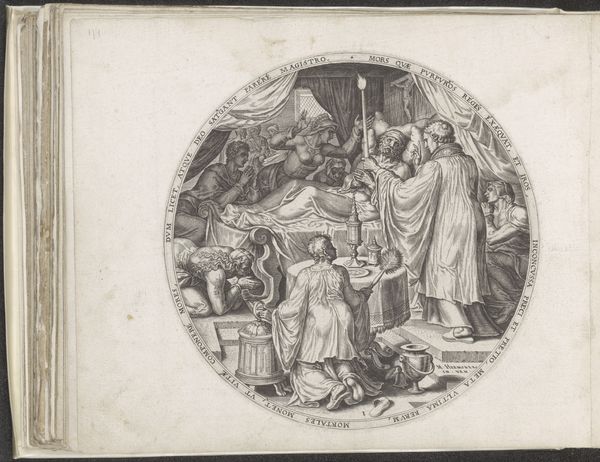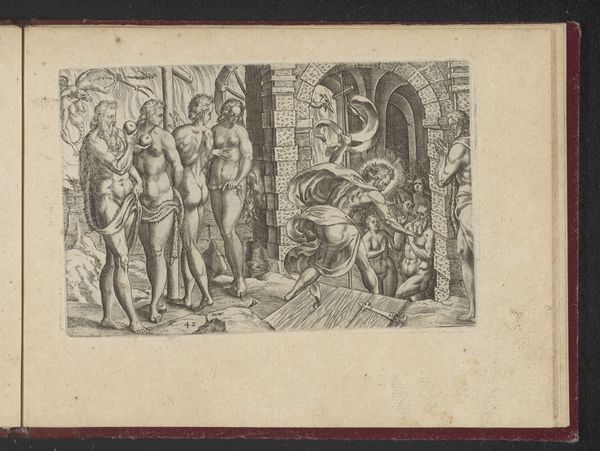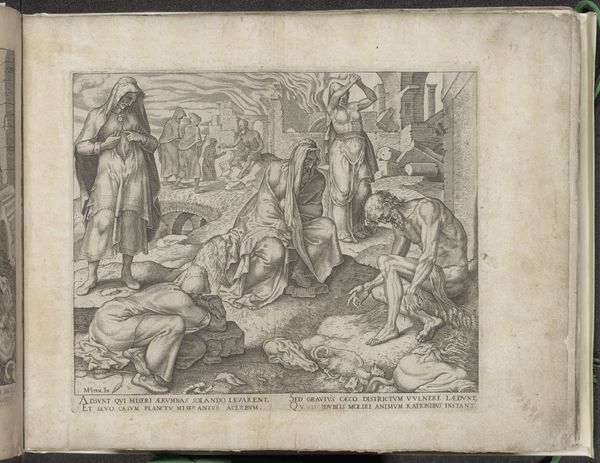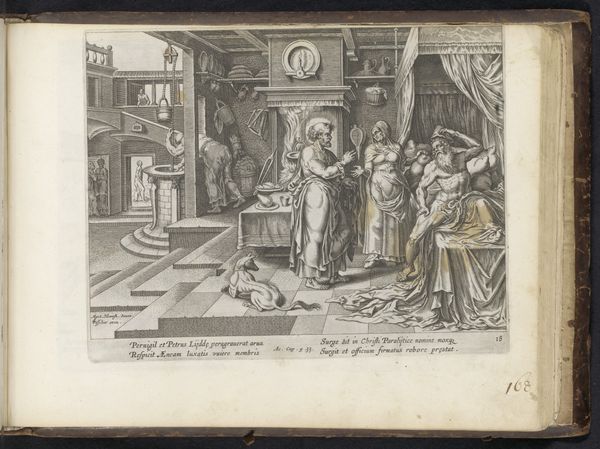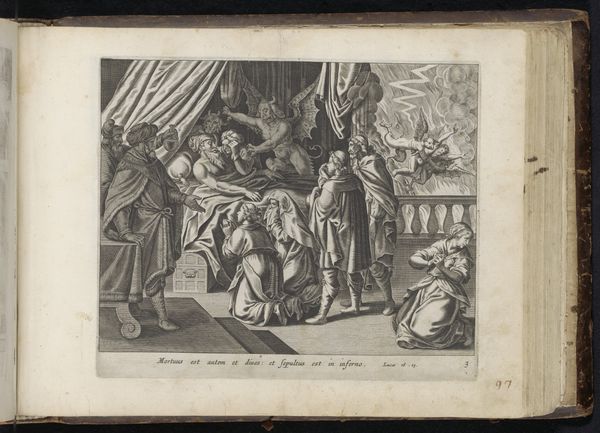
drawing, print, paper, ink, engraving
#
drawing
#
narrative-art
# print
#
landscape
#
figuration
#
paper
#
ink
#
coloured pencil
#
history-painting
#
northern-renaissance
#
engraving
Dimensions: height 92 mm, width 139 mm, height 137 mm, width 183 mm
Copyright: Rijks Museum: Open Domain
Curator: Before us, we have Philips Galle’s "Rest on the Flight to Egypt," an engraving dating back to 1573, currently held at the Rijksmuseum. Editor: The immediate feeling is one of contrast. We have this peaceful scene of the Holy Family juxtaposed with the backdrop filled with soldiers. It's quite dramatic for such a small piece, especially the detail of the landscape beyond. Curator: Exactly. This print operates on several levels, historically it pulls from religious narratives. Galle was working during a period of intense religious and political upheaval in Europe, which inflects this engraving, imbuing this tender family moment with an awareness of the violence and precarity facing refugees. The role of the angel too, guiding their escape, highlights a powerful theme of protection and intervention in a hostile world. Editor: For me, the production of prints, their accessibility, are central here. Think of the copperplate, the act of engraving, the way the image then multiples, finding its way into homes across economic strata. Also note the materiality: ink on paper—humble components carrying potent social messages. Curator: Absolutely. Galle also worked within networks of other artists, printmakers, and publishers. We should consider how his representations both reflected and shaped existing beliefs, furthering the spread of very specific ideas. Think about the dissemination of biblical scenes into everyday life and how the narratives helped frame people's understanding of social dynamics, particularly those concerning the disenfranchised. Editor: Considering its materiality, this work challenges traditional assumptions of artistic value. While painting was reserved for wealthy patrons, printmaking involved a whole workshop of labor. The engraver, the printer, and then the distributor were creating cultural commodities in an early assembly line of art making. Curator: And it also demonstrates the powerful role of images in constructing historical memory and identity. It's through representations like these that specific ideologies are propagated. Understanding those systems is key to understanding society's historical and ongoing relationship with the displaced. Editor: Indeed, an artifact of religious propaganda. And even today it has an aura. The way in which that angel shelters a tired man, a mother cradling her child speaks directly to an era of economic insecurity and fear about otherness. I find a potent resonance. Curator: I agree. Engaging with its complexities offers space to ask necessary questions about faith, politics, and resistance across centuries. Editor: For me, it all circles back to material realities. Looking at the etching lines I wonder: how were these kinds of religious items circulated? To what social strata did this piece speak? It provides much insight, doesn't it?
Comments
No comments
Be the first to comment and join the conversation on the ultimate creative platform.

